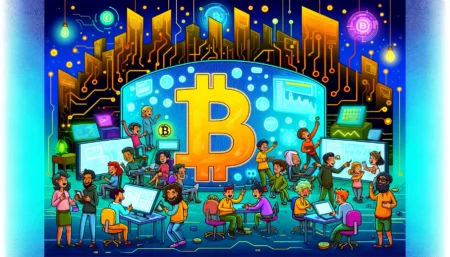DeFi protocols are in action. As returns from fee-based business models decline and on-chain activity dries up, blue-chip DeFi protocols are seeking alternative revenue streams to strengthen and diversify their protocols.
We’ve already seen early signs of this expansion, with Frax launching liquid staking and lending products, Ribbon developing an options exchange, and Maker entering the lending space with Spark Protocol.
Now, we have a new form of diversification, application-specific stablecoins, which refer to stablecoins issued by DeFi protocols as secondary products of the protocol, rather than the main product.
These stablecoins are usually issued in the form of credit, and users can borrow and mint stablecoins directly in the lending market or through DEX (decentralized exchange) to mortgage their assets. Protocols can earn income from this in various ways, such as through borrowing interest, minting/exchanging new stablecoins, peg arbitrage, and/or liquidating positions.
The stablecoin space, as we know it, is huge. Currently, there are $145 billion worth of stablecoins in the crypto ecosystem, and their future market size may reach trillions of dollars.
As regulators target fiat-backed centralized stablecoins like BUSD, DeFi protocols may have the opportunity to not only diversify their business models, but also capture some market share.
Many people think that DAI and FRAX are the most likely to take a large market share from USDC and USDT, but will some application-specific stablecoins interfere?
GHO and crvUSD
The two most prominent stablecoin issuance agreements so far are Aave and Curve, and the stablecoins issued are GHO and crvUSD respectively. Let’s take a brief look at these stablecoins.
GHO
GHO is a decentralized stablecoin issued by Aave. GHO is over-collateralized because it is backed by deposits from Aave V3, and users can mint the stablecoin directly on the money market.
GHO is unique in that, unlike other assets in Aave that have an algorithmically determined interest rate, its borrowing rate will be set manually through governance. This gives Aave complete control over the cost of minting/borrowing GHO, allowing the DAO the opportunity to undercut its competitors (more on that later).
In the future, in addition to Aave V3, GHO can also be minted from other sources through whitelisted entities called facilitators. These facilitators can mint GHO based on various types of collateral, including delta-neutral positions and real-world assets.
We’ve seen similar stablecoin designs before, such as Frax’s lending AMO and Maker’s D3M. But thanks to Aave’s inherent user base, brand, team’s business development skills, and a massive $130.9 million DAO treasury (albeit mostly in AAVE tokens), GHO’s growth prospects are strong.
GHO is currently live on the Goerli testnet and is scheduled to launch later in 2023.
crvUSD
crvUSD is a decentralized stablecoin issued by Curve. Many details of the stablecoin have been kept under wraps, but we do know that crvUSD will use an innovative mechanism called the Lending-Liquidation AMM Algorithm (LLAMA).
LLAMA adopts a “more benevolent” liquidation design. If the user’s collateral depreciates, the LLAMA mechanism will gradually convert the collateral into crvUSD instead of liquidating the user’s position completely at once.
All in all, LLAMA should help greatly reduce punitive liquidations, and this improved user experience for borrowers will likely increase the attractiveness of crvUSD-denominated CDPs (collateralized debt positions).
Not much is known about what type of collateral is supported and what role crvUSD will play in the ecosystem, but the stablecoin will likely be minted by LP tokens from the Curve pool. This will help improve the capital efficiency of providing liquidity on the platform, as LPs can also profit by deploying their crvUSD into DeFi.
rvUSD should also benefit from Curve’s measurement system, which is used to distribute CRV releases and thereby distribute DEX liquidity. It is very likely that part of these released tokens will be allocated to the crvUSD pool, or crvUSD will become the basic trading pair for other stablecoins, helping them easily build deep liquidity.
Market Impact
Now that we understand the current state of application-specific stablecoins, let’s dig in and see what impact this will have on the market.
Increased (theoretically) yield for issuer DAOs
The party most directly affected by application-specific stablecoins is the issuance protocol itself. In theory, creating a stablecoin could strengthen the business model of an issuing protocol, as it provides them with an additional revenue stream.
Currently, protocols like Curve and Aave rely on transaction fees and utility-based lending interest, respectively. The low-quality nature of these sources of income has become apparent in the current bear market, with earnings falling sharply due to increased competition, reduced trading and lending activity, and fee compression.
The issuance of stablecoins within the protocol changes this, as the protocol will now be able to capture additional revenue streams to boost its yield. While interest income is still cyclical as it is dependent on borrowing demand, it is more efficient (i.e. higher return on TVL) relative to transaction fees or spread capture in money markets.
While this interest yield may also face similar fee compression (explained below), there is theoretically still the potential to diversify the yield mix through other means (such as minting/exchange fees, pegged arbitrage, and liquidation) and Strengthen the moat of the underlying protocol.
Accumulation of “Potential” Value for Token Holders
Another party to benefit from the app-specific stablecoin boom is token holders of issuing protocols.
While dependent on each individual protocol, any revenue share will increase the yield available to holders of staked or locked tokens.
In bear markets we have seen revenue sharing assets like GMX and GNS outperform, protocols that issue stablecoins and share revenue with stablecoin holders will make their own tokens more attractive and in doing so they will have a better chance There are excellent performances.
For example, Curve will likely share crvUSD yields with veCRV lock holders, which means lock holders will receive cuts from transaction fees, governance bribes, and current stablecoin-based cash flows.
Given the regulatory risks associated with this approach, it is also possible that the issuing protocol could add utility to its tokens in other ways. For example, AAVE stakers will be able to borrow GHO at a discount relative to other users on the platform.
Bribery and Liquidity Fragmentation
One of the most critical factors for the success of stablecoins is to have deep liquidity. Liquidity is the lifeblood of any stablecoin — not only enabling low-slip transfers, but also helping facilitate integration, as liquidity is required for lending platforms to liquidate and secure infrastructure such as ChainLink LINK -14.12% oracles.
The need for liquidity in application-specific stablecoins could help underpin the governance bribery market.
Commonly influenced by Curve Wars, stablecoin issuers can build liquidity for their tokens on decentralized exchanges such as Curve and Balancer by bribing or paying token holders to ensure their vote validity for token release to specific pools sex.
Through bribery, issuers can rent the liquidity needed for specific channels on demand. The emergence of a plethora of application-specific stablecoins could lead to more DAOs getting in the game, bribing those token holders.
In turn, this should increase returns for CRV and BAL as well as CVX and AURA lock holders, who through metaggovernance (meta governance) control the majority of token releases and receive most of the bribes on Curve and Balancer respectively.
Another beneficiary of this bribery spree is the marketplace where these bribes are traded, such as Redacted Cartel’s Hidden Hand and Votium.
However, this bribe will cost end users in the form of liquidity fragmentation. In a cryptocurrency market that shows few signs of inflows, liquidity could become thinner across the various stablecoins, leading to poorer execution by whale traders.
Credit Boom
The growth of app-specific stablecoins could also spawn a DeFi credit boom by leading to the proliferation of low borrowing rates.
In order to compete with existing stablecoins such as USDC, USDT, DAI and FRAX, stablecoins such as Aave and Curve may have to offer GHO and crvUSD at low borrowing rates to attract users to mint new coins to increase their circulating supply.
In theory, this low-rate-driven credit boom could spur the growth of DeFi and the broader crypto market, with yield farmers and degens alike being able to borrow at surprisingly low rates. This could also open up interesting crypto<>traditional financial arbitrage opportunities, as users might be able to borrow stablecoins at rates far below US Treasuries.
We’ve already seen early signs of adjustments to this new paradigm by stablecoin issuers such as Maker, which will offer DAI borrowing at a 1% DAI deposit rate (DSR) via Spark, a Maker-controlled fork of Aave V3.
While this reduction in borrowing rates could hurt the earnings of issuance protocols like Aave and Curve, it could help feed a credit-hungry market following the collapse of CeFi lenders in 2022. With interest rates significantly higher than the DSR and possible borrowing rates for stablecoins such as GHO, cryptocurrencies will become one of the cheapest credit markets in the world.
The Wildcat Era of DeFi
Wildcat banking (Wildcat banking) is a period in the history of the United States when banks issued their own currencies. As we speak, DeFi is accelerating the pace of financial history, and — via stablecoins like GHO and crvUSD — appears to be on the verge of embarking on a similar trajectory.
While they are unlikely to surpass more advantageous existing stablecoins such as DAI and FRAX, GHO and crvUSD benefit from the integration of their issuance protocols and will likely carve out a niche market.
While in theory these stablecoins would help strengthen the issuer’s business model and accumulate value for token holders, this outcome is unlikely due to the “race to the bottom” where In , issuers will compete at low interest rates to undercut each other in order to provide borrowers with credit at the lowest possible cost.
As such, these low interest rates are likely to spawn a credit boom, boosting the on-chain economy with cheap capital.
In a world where the cost of capital has risen dramatically over the past year, this has the potential to position DeFi as one of the lowest cost capital markets in the world, perhaps rekindling interest and bringing capital inflows to the DeFi ecosystem.






